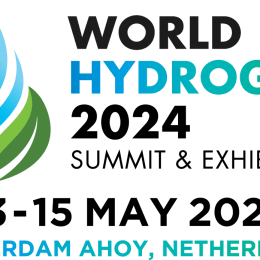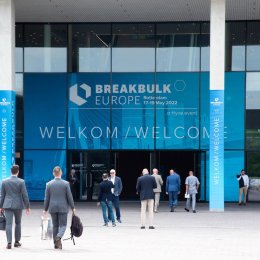Rotterdam boosts hydrogen economy with new infrastructure

Allard Castelein, CEO of the Port of Rotterdam Authority: ‘We are currently expediting our plans to construct a public hydrogen network in the port area. The work on this backbone for Rotterdam’s industrial sector will be rounded off concurrently with Shell’s electrolyser. A main transport network like this can be used to connect producers and users. This in turn helps to create a market and boosts the production and consumption of hydrogen. Besides accommodating production, in the longer term Rotterdam will also play a crucial part in the import of hydrogen thanks to the realisation of multiple hydrogen terminals. Hydrogen promises to become the energy carrier of the 21st century.
Hydrogen pipeline
The Port Authority and Gasunie plan to jointly construct and operate the hydrogen pipeline, which will run parallel with the A15 motorway between Maasvlakte and Pernis. The parties plan to take the definite decision to greenlight construction in the first half of 2021. In the near future, Rotterdam’s hydrogen pipeline will be hooked up to the national hydrogen network developed by Gasunie.
Shell will be constructing its hydrogen plant at a dedicated industrial site realised by the Port Authority at Maasvlakte for electrolysers operated by various companies. Another project planned at this site is H2-Fifty (the construction of a 250 MW electrolyser operated by BP and Nouryon). This facility is expected to become operational in 2025. Situated on the coast of the North Sea, this special industrial site (named a ‘conversion farm’) uses offshore wind power to produce hydrogen. The hydrogen produced at the plant will be transported to users via a pipeline.
Blue and green
Apart from these two mega electrolysers, various companies in the port area are working on plans for smaller models with capacities ranging from 5 to 100 MW (for the sake of comparison: the largest electrolyser currently operating in the Netherlands has a capacity of 1 MW). In addition, a consortium is working on plans for the production of the hydrogen variant known as blue hydrogen. The objective within this H-vision project is to produce hydrogen from gas sourced from refineries or natural gas, while capturing the carbon released by this process and storing it under the North Sea seabed. The large-scale production of blue hydrogen could be set up well before 2030. By contrast, the production of green hydrogen via electrolysis requires a huge volume of green electric power – which will at any rate be in short supply for another decade.
Another project that has therefore been initiated is the realisation of 2 GW of extra offshore wind capacity (extra when compared to the existing plans for wind farms out on the North Sea) that will be reserved for the production of green hydrogen. This has been recognised as an option in the government’s Climate Agreement, and the Port Authority is currently conferring with the national authorities regarding the landing of this project. The electrolysers that will be sourcing this offshore power can be set up at the Maasvlakte conversion park.
Carbon reduction
The H-Vision project will yield around 2.2 to 4.3 Mt in carbon savings. The 2 GW electrolysis ‘conversion park’ will reduce carbon emissions by 3.3 Mt (based on the electrolysers running 8,000 hours per year, and compared to the production of grey hydrogen).
Large-scale import
Northwest Europe consumes far more power than can be generated locally from renewable sources. That is why the region is required to import hydrogen (or hydrogen bonds like ammonia) on a large scale. The national government has asked the Port Authority to map out the various options to import hydrogen from abroad, so the port of Rotterdam can retain its pivotal role in international power transport. Similar to how the port presently imports large volumes of oil and coal for the Netherlands, Germany and Belgium, in the near future, Rotterdam will serve as a major hub for renewable energy flows.
Source: Port of Rotterdam



